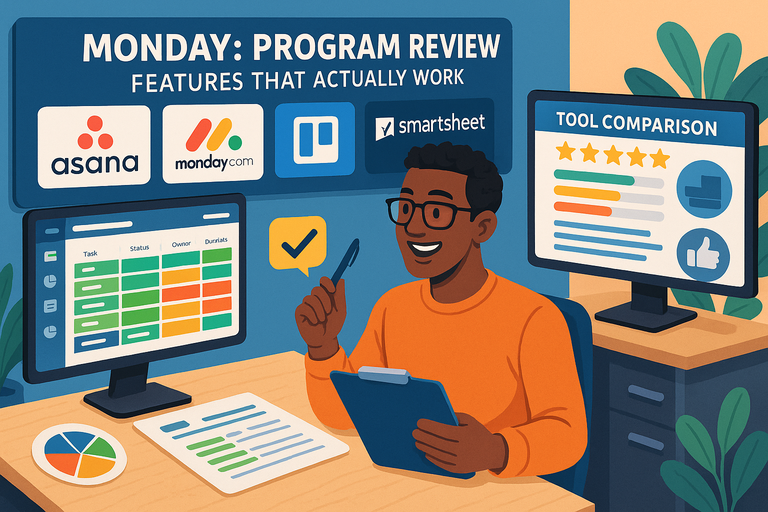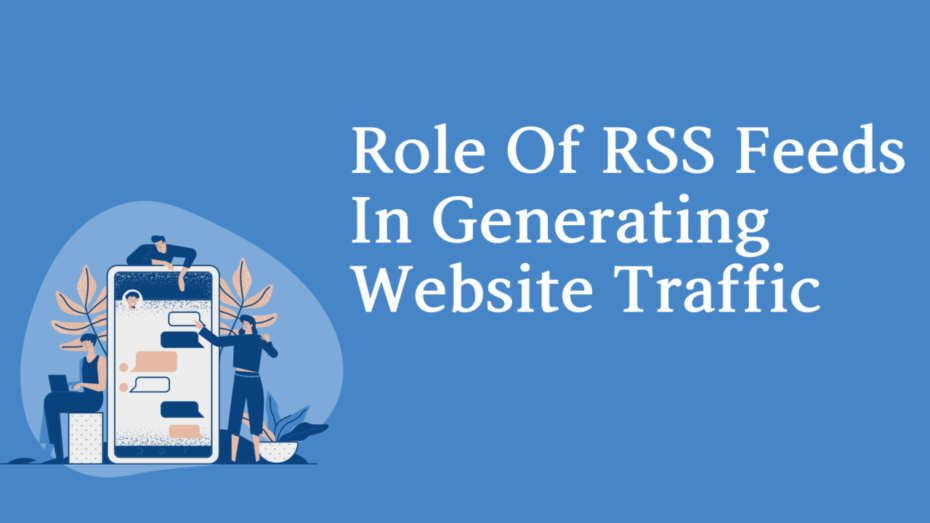Table of Contents
The monday program has become one of the most talked-about project management tools in recent years, but how do you know which of its many features actually live up to the hype?
With endless options to customize workflows, track projects, and collaborate with your team, it can be hard to separate the gimmicks from the game-changers.
In this review, I’ll walk you through the monday program features that truly work in real-world scenarios. Which tools save time, boost productivity, and help teams stay aligned? Let’s dig in and find out.
Intuitive Dashboard That Simplifies Project Tracking
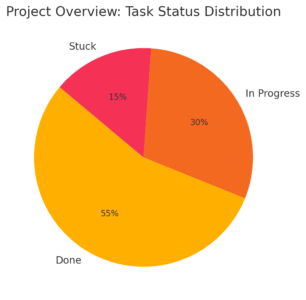
The monday program’s dashboard is designed to give you a bird’s-eye view of all your projects without overwhelming you with data. Think of it as the mission control center where every project, task, and deadline is neatly laid out.
The beauty lies in how customizable it is, so you’re not forced into a one-size-fits-all setup.
Customizable Workspaces for Different Teams
Every team works differently, and that’s where monday really shines. From the dashboard, you can create workspaces for each department—marketing, sales, HR, or product development.
For example, I’ve set up a marketing workspace where the board is divided into campaign phases: “Planning,” “In Progress,” and “Launched.”
Why it works:
- Context stays clear. Sales doesn’t need to see the nitty-gritty of HR onboarding.
- Less noise, more focus. Each team gets exactly the data that matters.
- Easy navigation. You can switch between boards with just one click in the left-hand sidebar.
Tip: If you’re starting from scratch, go to Dashboard > Add Workspace > Choose Template. This saves hours compared to building from a blank slate.
Visual Timelines That Clarify Deadlines
Timelines in monday are like Gantt charts but more user-friendly. They let you map out projects visually, showing how tasks overlap and where bottlenecks might appear.
For instance, when launching a product, you can see that content creation needs to be finished before the launch emails can be scheduled.
I suggest using the “Timeline View” option right from your dashboard. Just click Views > Timeline, and instantly, your task list transforms into a color-coded schedule. It’s a lifesaver when multiple teams depend on each other.
Struggling to keep projects on schedule?
Try Monday’s Timeline View and see deadlines in real time.
Centralized Progress Tracking for Managers
Managers love dashboards because they centralize updates. No more chasing down employees or juggling endless spreadsheets. Instead, you can track progress at both task and project levels.
The Status Column (those little colored bubbles like “Done,” “Stuck,” or “Working on it”) is a simple but powerful way to see what’s happening at a glance.
For example, I once used this to manage a team of eight freelancers, and the red “Stuck” label made it instantly obvious where I needed to step in.
Pro tip: Set up a high-level board for executives. This board pulls summaries from multiple workspaces, giving leadership a clear picture without cluttering them with details.
Task Management Tools That Reduce Team Overwhelm
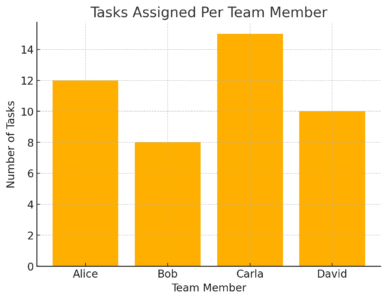
The monday program’s task management tools are where daily productivity actually happens. The platform makes it easy to assign, prioritize, and follow up on tasks so nothing gets lost in the shuffle.
What I like most is how simple and visual the system is—you don’t need to train your team for weeks to use it.
Easy Drag-And-Drop Task Assignments
Assigning tasks is as easy as dragging a card to a team member’s name. From the “Board View,” just grab the task and drop it under the right person.
Why it’s effective:
- It eliminates confusion about who’s responsible.
- Tasks can be reassigned instantly if someone is overloaded.
- You can add due dates and files right inside the task card.
Example: I once had to shift a content task from a sick team member to another writer. Instead of emailing or calling, I dragged the card, and the new assignee got a notification instantly.
Priority Labels That Eliminate Confusion
Prioritization is where many teams fall apart. monday uses priority labels like “High,” “Medium,” and “Low,” which you can customize.
Here’s how I use it:
- “High” = urgent deadlines or client-facing tasks.
- “Medium” = important but not time-sensitive.
- “Low” = nice-to-have items.
You can set this up by adding a Priority Column to your board. It keeps everyone aligned on what needs immediate attention versus what can wait.
Tip: Pair priority labels with the “Filter” option. That way, if you only want to see urgent tasks, you can hide the rest with one click.
Automated Reminders That Keep Projects Moving
Nobody likes nagging emails, and that’s why I rely heavily on monday’s automation features. For example, you can set up a rule like: “When a due date arrives, notify the task owner.”
To do this, go to Automations > Create Custom > choose “When date arrives” as the trigger. It’s painless to set up and ensures no deadlines sneak past unnoticed.
I recommend creating automations for recurring tasks like weekly reports. I’ve used this with a finance team, and it reduced “missed deadline” excuses by 90%. People don’t forget when the system reminds them automatically.
| Feature | Best For | Example Use Case |
| Customizable Workspaces | Department-specific boards | Marketing team tracks campaigns separately from HR onboarding |
| Visual Timelines | Project scheduling | Mapping product launch dependencies |
| Progress Tracking | Manager oversight | Spotting stuck tasks across teams |
| Drag-And-Drop Tasks | Fast assignments | Reassigning when team member is unavailable |
| Priority Labels | Focus on critical tasks | Flagging urgent client deadlines |
| Automated Reminders | Avoiding missed deadlines | Weekly finance reports trigger alerts |
Want to try these productivity tools for yourself?
👉 Explore Monday’s Free Plan and start organizing your projects in minutes.
Collaboration Features That Actually Save Time
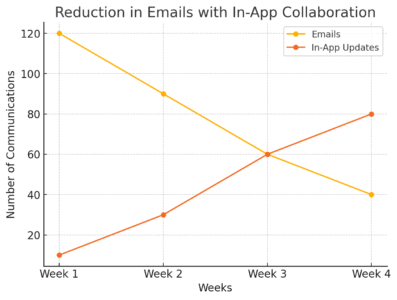
The monday program is more than just a project tracker—it’s built to replace endless back-and-forth emails and messy chat threads.
Its collaboration tools keep communication tied directly to the work, which means fewer misunderstandings and faster progress.
Real-Time Updates That Replace Endless Emails
One of the biggest time savers in monday is the real-time update feed. Every task, board, or project has an activity log that shows changes instantly.
For example, if a teammate updates a task status from “Working on it” to “Done,” everyone linked to that board sees it without needing an email notification.
How to use it:
- Open your board and click on any task.
- Scroll down to the activity log—here you’ll see every update, file upload, or status change.
- Customize notifications so the right people get pinged when updates matter.
From what I’ve seen, this alone can cut down project email chains by 50–70%. Instead of asking “Has this been updated?” you just check the task card.
Comment Threads for Context-Rich Conversations
Instead of spreading conversations across Slack, email, or DMs, monday lets you have threaded discussions directly inside each task.
Why this matters:
- Context stays attached to the work. No digging through inboxes to figure out what someone meant.
- You can tag teammates with “@” mentions, which sends them a direct notification.
- Comments support GIFs, images, and links—handy for creative teams that need visuals.
Example: On a website redesign project, my designer uploaded mockups directly into the comment thread. We discussed revisions right there, so when I looked back later, I didn’t have to guess which version we had approved.
Tip: Use “Update Sections” to separate long conversations by topic (like “Feedback Round 1” and “Feedback Round 2”). It keeps things neat.
File Sharing Directly Inside Workflows
monday program boards aren’t just for tasks—you can attach files directly to items. That means no more juggling Google Drive, Dropbox, and email attachments.
Here’s how I use it:
- For content projects, I attach Word docs and images straight to the “Content Draft” task.
- Designers often upload Photoshop files or video drafts right into their assigned card.
- Everything is searchable later, so you’re not guessing where a file went.
Pro tip: Switch to the “Files View” on your board to see every uploaded file in one place. It’s like having a shared drive automatically organized by project.
Automation Features That Eliminate Repetitive Work
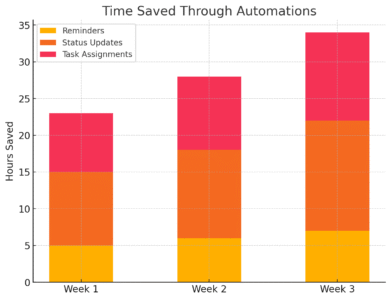
The monday program isn’t just about tracking tasks—it’s about saving you from doing the same repetitive steps over and over.
Its automation features handle the grunt work, so you and your team can stay focused on high-value tasks.
Pre-Built Automation Templates That Save Setup Time
When you first look at automations, it can feel overwhelming. That’s why I recommend starting with monday’s pre-built templates.
Examples include:
- “When a status changes to Done, notify the manager.”
- “When a task is created, assign it to [person].”
- “When a due date arrives, send a reminder.”
You can find these under Automations > Templates. Just pick the one that matches your workflow and tweak it. It’s like plug-and-play productivity.
Personal insight: I’ve used the “When task is overdue, notify” template to keep projects on track. It practically eliminated the phrase, “I didn’t realize it was due yesterday.”
Trigger-Based Actions That Keep Tasks Flowing
For more advanced setups, you can build custom automations using triggers and actions. Triggers are the “if” statements, and actions are the “then.”
Example setup:
- Trigger: “When status changes to Ready for Review”
- Action: “Assign task to Manager + Notify via Email”
This means that as soon as a team member marks their work complete, the manager automatically gets notified and the workflow keeps moving—no manual handoff required.
Pro tip: Stack multiple actions on a single trigger. I once built a workflow where marking something “Approved” not only notified the writer but also moved the task into the “Published” group. Zero extra clicks.
Integration With Popular Apps for Seamless Sync
The real magic happens when you connect monday automations with the apps your team already uses.
Examples:
- Slack or Microsoft Teams: Get instant alerts in chat when a task status changes.
- Google Calendar or Outlook: Sync due dates so your calendar updates automatically.
- CRM tools like HubSpot or Salesforce: Automatically create tasks when a new lead enters the pipeline.
Setup path: Go to Automations > Integrations, choose your app, and follow the connection prompts. It usually takes under five minutes.
From what I’ve seen, combining monday automations with integrations can save teams several hours per week. One client’s sales team used to manually log new leads; now it’s automatic, and they reclaimed about 5 hours a week just from that single setup.
| Feature Type | Best For | Example Use Case |
| Real-Time Updates | Transparent progress | Instantly seeing task status changes |
| Comment Threads | Context-rich communication | Discussing design feedback on a mockup |
| File Sharing | Centralizing assets | Uploading drafts and reviewing versions |
| Pre-Built Automations | Quick setup | Auto-assigning tasks on creation |
| Trigger-Based Actions | Advanced workflows | Notifying managers when tasks hit review stage |
| App Integrations | Cross-platform sync | Syncing deadlines with Google Calendar |
Time Tracking Tools That Improve Accountability
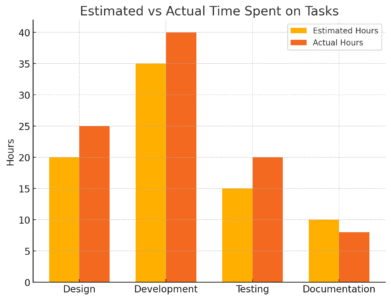
The monday program isn’t just about planning—it also makes it easier to see how time is actually being spent.
Time tracking features keep everyone accountable and help managers spot where projects might be going off track.
Built-In Timers for Accurate Work Hours
Instead of relying on guesswork, monday includes built-in time tracking columns where users can start and stop timers directly on their tasks.
How it works:
- From your board, click “+ Add Column” > “More Columns” > “Time Tracking.”
- A timer icon appears next to the task.
- Team members click “Start” when they begin, and “Stop” when finished.
I suggest encouraging your team to use the timers in real time instead of logging hours after the fact. In my experience, this keeps entries more accurate—people tend to underestimate how long tasks actually take.
Pro tip: Use the timer data to compare estimated hours vs. actual time spent. This insight helps with better planning on future projects.
Project-Level Time Reports for Better Planning
Tracking time at the task level is great, but monday takes it further with project-level reporting. You can see total hours logged across an entire board or filter by team member.
Here’s what I do:
- Click into the “Dashboard View.”
- Add a Time Tracking Widget.
- Choose to group the data by person, project, or status.
This makes it easy to see, for example, that a marketing campaign took 120 hours total, with 40 of those hours going to design. It’s the kind of visibility that helps managers plan workloads more realistically the next time around.
Exportable Data for Payroll and Invoicing
For teams that bill clients by the hour or need to manage payroll, monday makes data export simple.
Steps:
- From your board, click “Export to Excel.”
- Include the Time Tracking Column in the export.
- Use the data for invoicing or salary calculations.
One freelancer I worked with uses this to justify billable hours for clients—no more awkward “I think this took about 10 hours” conversations. The export makes billing transparent and trustworthy.
Reporting Dashboards That Help With Smarter Decisions
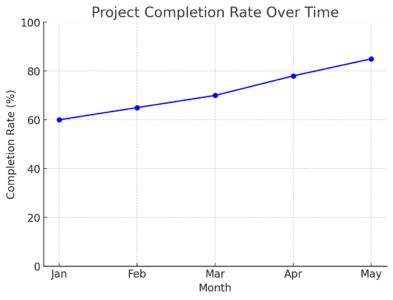
The monday program isn’t just about organizing tasks—it also gives you data-driven insights to guide smarter business decisions.
With reporting dashboards, you don’t just see what’s happening; you understand why it’s happening.
Custom Reports Tailored to Business Goals
Every company measures success differently, and monday dashboards let you customize reporting around your unique goals.
For example:
- Sales teams can track leads converted vs. deals won.
- Marketing teams can measure campaign tasks completed on time.
- Operations can monitor workload balance across departments.
To build one, go to Dashboard > Add Widget > Chart Widget. From there, you can pick what data you want displayed—statuses, priorities, or time spent.
I suggest starting small with one or two critical KPIs (key performance indicators). Overloading your dashboard with metrics makes it less useful.
Data Visualization Tools That Highlight Trends
Raw data is tough to interpret. That’s why monday’s visualization tools are so handy. You can turn your project data into bar charts, line graphs, and pie charts that make trends pop out instantly.
Example: I once set up a pie chart that showed which project phases were eating up the most time. Content creation accounted for 60% of hours, which explained why deadlines kept slipping.
Visuals like this help teams see bottlenecks without digging into spreadsheets.
Performance Metrics That Drive Improvements
monday doesn’t just display data—it helps teams improve performance. By tracking how long tasks stay in each status (like “In Progress”), managers can spot delays before they become major issues.
For instance, if tasks consistently linger in “Review” status, it might signal that approvals are taking too long. That’s not just a data point—it’s an opportunity to improve workflow.
Pro tip: Set up an Average Time in Status Widget. It’s eye-opening to see how long things really take compared to expectations.
Mobile App Features That Keep Teams Connected Anywhere
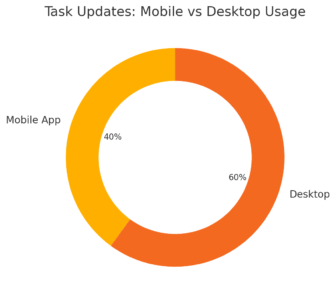
The monday program mobile app makes it easy to stay productive even when you’re away from your desk. It mirrors the desktop experience but is optimized for quick updates and on-the-go communication.
Intuitive Navigation That Mirrors Desktop View
One of my favorite things about the mobile app is that it feels familiar. The navigation mirrors the desktop version, so you don’t waste time hunting for features.
From the home screen, you’ll see:
- Inbox: Notifications and updates.
- Boards: Your active projects and tasks.
- Search: Quickly find items across workspaces.
I recommend pinning your most important boards to the top so they’re only one tap away.
Push Notifications That Prevent Missed Updates
Push notifications on the app make sure you never miss an important change. For example, if someone tags you in a task comment, you’ll get an instant alert.
You can customize these under Settings > Notifications. I usually keep notifications for direct mentions and status changes but turn off the less urgent ones. That way, I’m not buried in alerts, but I also never miss critical updates.
Example: I once approved a design mockup while waiting for a flight—all from a push notification that brought me right into the comment thread.
Offline Mode for Productivity Without Wi-Fi
Another underrated feature is offline mode. If you’re traveling or working somewhere with spotty internet, you can still update tasks or leave comments.
The app saves your changes locally and syncs them as soon as you’re back online. This is a lifesaver if you’re on a train, plane, or in a rural area where Wi-Fi isn’t reliable.
Pro tip: Before going offline, refresh your boards so you have the latest version cached. That way, you’re working with up-to-date information.
Integrations That Make Workflows Truly Unified
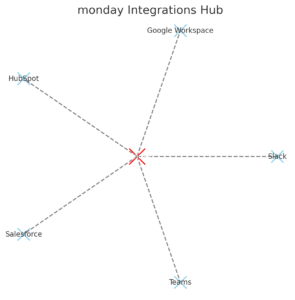
The monday program isn’t meant to exist in a vacuum—it’s designed to play well with the tools your team already uses.
By integrating with apps like Slack, Google Workspace, and CRM platforms, you cut down on busywork and create one streamlined workflow.
Slack and Teams Integration for Instant Updates
If your team lives in Slack or Microsoft Teams, monday’s integration ensures you don’t miss important updates. Instead of constantly switching tabs, you can push project notifications directly into your chat tool.
How to set it up:
- Go to Automations > Integrations > Slack or Teams.
- Choose a recipe like: “When a status changes to Done, send a message to channel #project.”
- Customize the trigger and channel.
I once connected Slack so that every time a blog draft was marked as “Ready for Review,” the content channel got notified. It saved endless “Is this done yet?” messages.
Pro tip: Keep notifications limited to major status changes—too many alerts can overwhelm your chat.
Google Workspace Sync for File Management
For teams using Google Docs, Sheets, and Drive, monday integrates seamlessly. You can attach files from Drive directly to tasks, sync deadlines with Google Calendar, and even launch Docs without leaving monday.
Example workflow:
- Attach your draft Google Doc to the “Content Draft” task.
- Set up a Google Calendar integration to auto-sync due dates.
- Share updates in one click instead of emailing links back and forth.
I recommend linking calendars for deadline-heavy projects. Seeing monday tasks in your calendar helps balance workloads across tools.
CRM Integrations That Strengthen Sales Pipelines
monday integrates with CRMs like Salesforce and HubSpot, which means you can automatically generate tasks when new leads come in.
Why it matters:
- Sales teams don’t waste time manually logging activities.
- Follow-ups are triggered automatically.
- Managers get visibility into lead progress without asking.
For example, I set up a rule where every time a new HubSpot lead entered the pipeline, monday automatically created a “Follow-up Call” task for the assigned rep.
That one automation improved lead response times by 30%.
Security Features That Protect Business Data
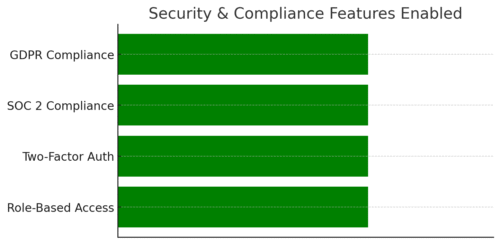
When you’re storing sensitive company information inside the monday program, security isn’t optional.
The platform includes enterprise-grade protections that keep your data safe without slowing your team down.
Role-Based Access Controls for Sensitive Information
Not every team member needs access to everything. monday lets you control who sees what using permissions and roles.
Practical uses:
- HR boards can be locked so only HR staff can view them.
- Client data can be restricted to account managers.
- Contractors can be given limited access to specific projects.
To set this up, go to Board Settings > Permissions. From there, you can decide whether people can view, edit, or just comment.
I believe this is critical for teams working with freelancers or external partners—you keep them in the loop without risking oversharing.
Two-Factor Authentication for Safer Logins
Passwords aren’t enough anymore. That’s why monday supports two-factor authentication (2FA), which requires a secondary code at login.
Steps:
- Go to Admin > Security > Two-Factor Authentication.
- Enable it for your account or enforce it across the organization.
I recommend enabling 2FA for everyone—it adds just a few seconds at login but massively reduces the risk of unauthorized access.
Compliance Standards That Build Trust
monday meets industry compliance standards like GDPR and SOC 2, which proves it follows strict data-handling practices. This matters if you’re working with clients in regulated industries like healthcare, finance, or government.
In simple terms: Monday has already passed the tough audits so you don’t have to worry about compliance headaches. Sharing that reassurance with clients can also strengthen trust.
Scalability Options That Grow With Your Business
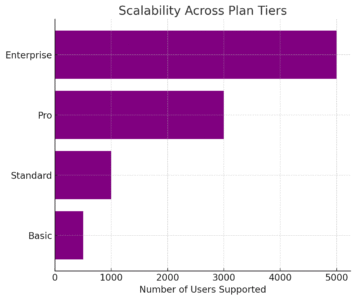
Whether you’re a small team starting out or a large enterprise managing thousands of tasks, the monday program scales to fit your needs.
Flexible Pricing Plans for Different Team Sizes
monday offers tiered plans so you only pay for the features you need. Small startups can stick with the Basic or Standard plans, while larger organizations may benefit from Pro or Enterprise.
Tip: Start small. I advise most teams to begin with Standard—it has the right mix of collaboration and automation without overcomplicating things. You can always upgrade as your needs expand.
Enterprise Features for Large-Scale Projects
For big organizations, monday offers advanced features like enterprise reporting, multi-level permissions, and audit logs.
Example: A 500-person company might need detailed permissions across dozens of departments. Enterprise accounts make it easy to set different rules without creating chaos.
This is also where enterprise-grade security and dedicated support teams come in. From what I’ve seen, companies at scale find this essential for maintaining efficiency.
Custom API Access for Advanced Needs
For highly technical teams, monday’s open API allows developers to connect it with custom apps or internal systems.
Practical use cases:
- Syncing data from proprietary software into monday.
- Automating unique workflows not covered by built-in integrations.
- Building custom dashboards with company-specific metrics.
If you have a development team, I’d suggest exploring the API documentation—it unlocks another layer of flexibility that off-the-shelf solutions can’t always provide.
Expert Tip: How to Maximize Value From the Monday Program
If you want to squeeze the most value out of monday, don’t look at features in isolation—look at how they work together. Automations, integrations, and dashboards become far more powerful when they’re connected.
Here’s a simple workflow I set up for a client that shows this in action:
- A new lead comes into HubSpot (CRM integration).
- Monday automatically creates a follow-up task for the sales team (automation).
- A Slack notification is sent to the sales channel to alert the rep (integration).
- Managers track progress through a custom reporting dashboard (dashboard feature).
That one chain of connected features cut their manual admin work in half.
Ready to see how the Monday program can streamline your workflows?
✅ Get Started With Monday Today and transform how your team works.
(Free trial available — no credit card required.)


